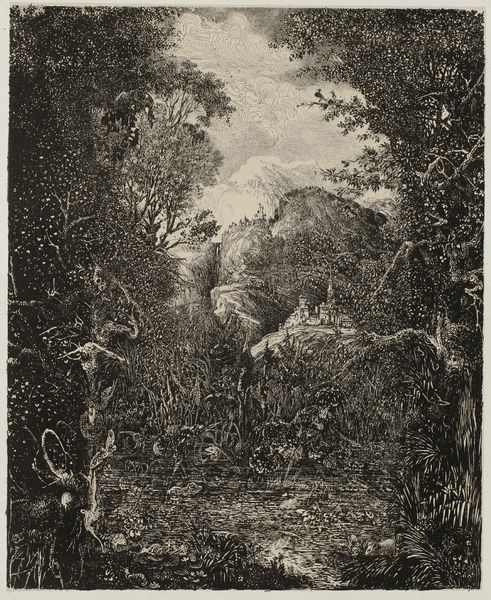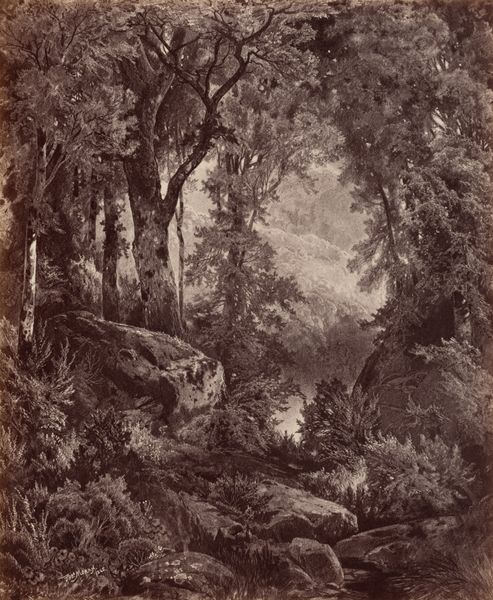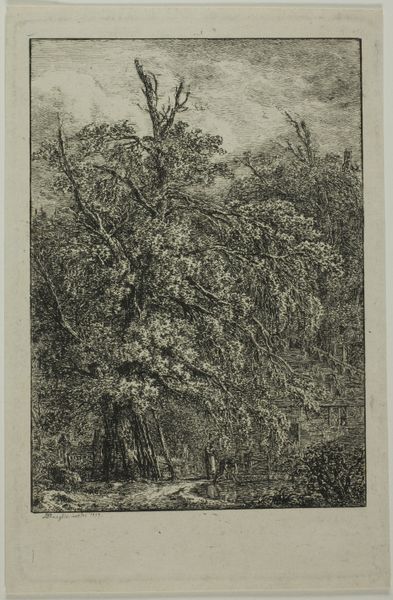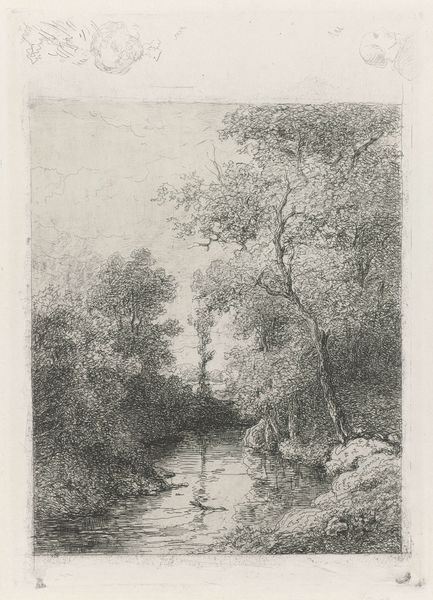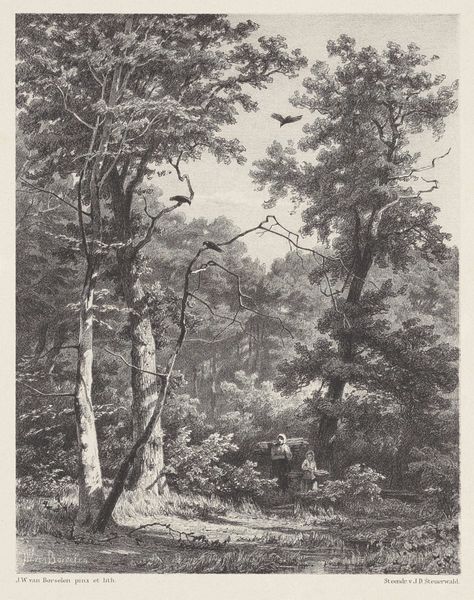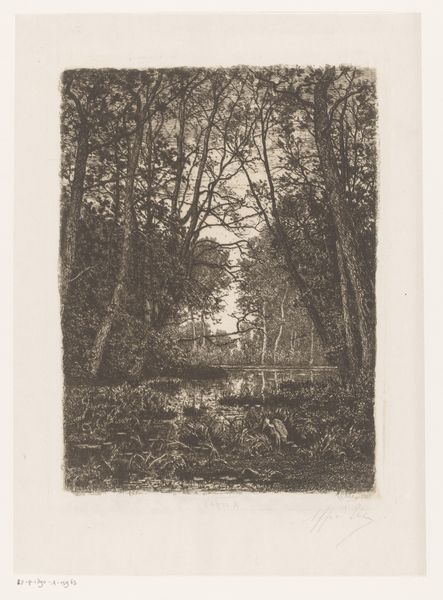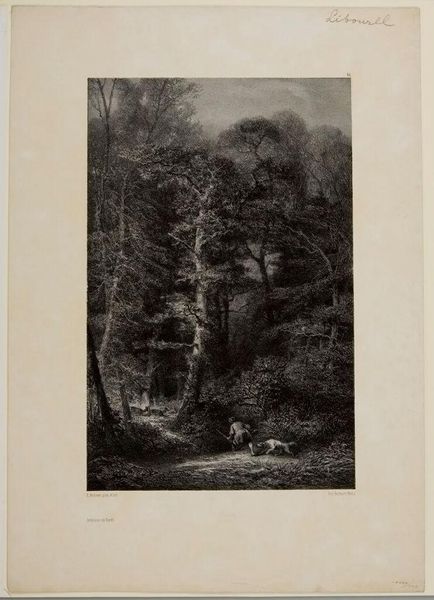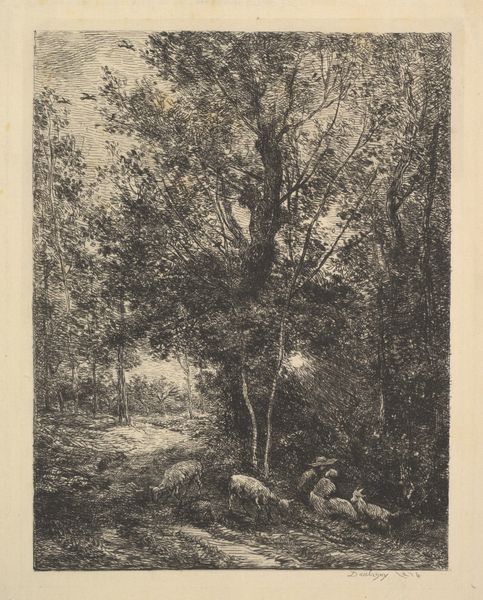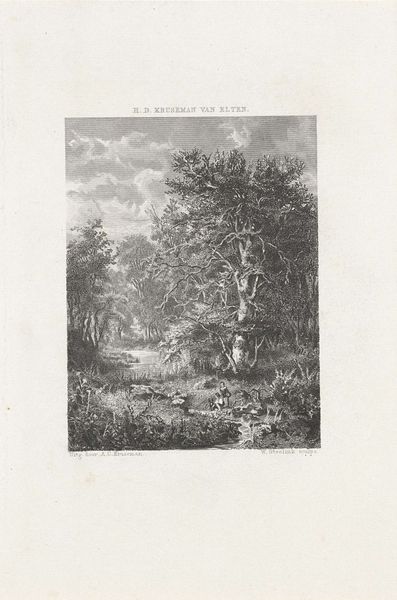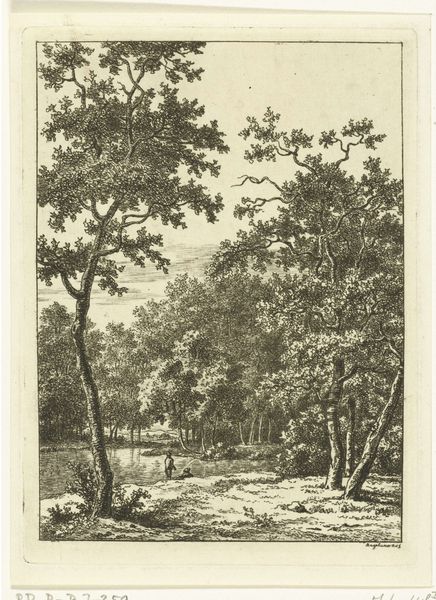
print, engraving
# print
#
old engraving style
#
landscape
#
pencil drawing
#
forest
#
romanticism
#
line
#
remaining negative space
#
engraving
#
realism
Dimensions: height 648 mm, width 480 mm
Copyright: Rijks Museum: Open Domain
Editor: This is "Boslandschap met beek," or "Wooded Landscape with Stream," an engraving by Alexandre Calame, dating from around 1850. The level of detail is incredible, especially considering it's a print. It almost feels like a photograph. How can we interpret this forest scene through its materials and production? Curator: The image immediately directs my attention to the labour involved in its creation. Engravings like this demanded exceptional skill. Think of the engraver meticulously carving into the metal plate, a direct interaction with the material that mediates our relationship with nature depicted. How do the textures achieved through the engraving process – the density of lines, the variations in depth – affect our perception of the forest? Editor: I see what you mean. The density definitely creates depth and that sense of detail I noticed, but the evenness also sanitizes nature to a certain degree. There is a certain manufactured aesthetic. What’s the significance of choosing printmaking to portray this seemingly untouched landscape? Curator: Precisely! Printmaking allowed for mass production and wider dissemination of images. How might the availability and affordability of such prints have shaped the 19th-century understanding and consumption of nature? Consider too, the Romantic movement’s idealization of nature. Were these prints feeding that demand, commodifying the very idea of untouched wilderness? How does that complicate our appreciation today? Editor: That makes sense. So, the material and method weren't just about creating a pretty picture, but actively shaped how people understood and interacted with the natural world, turning it into a product in a way. Curator: Exactly! By considering the material conditions of its production, we move beyond a simple aesthetic appreciation and towards a critical understanding of art's role in shaping our culture and our relationship to labor itself. Editor: This gives me so much more to think about in terms of the market of images at the time and the hand of the artist! Thanks for illuminating this perspective.
Comments
No comments
Be the first to comment and join the conversation on the ultimate creative platform.
